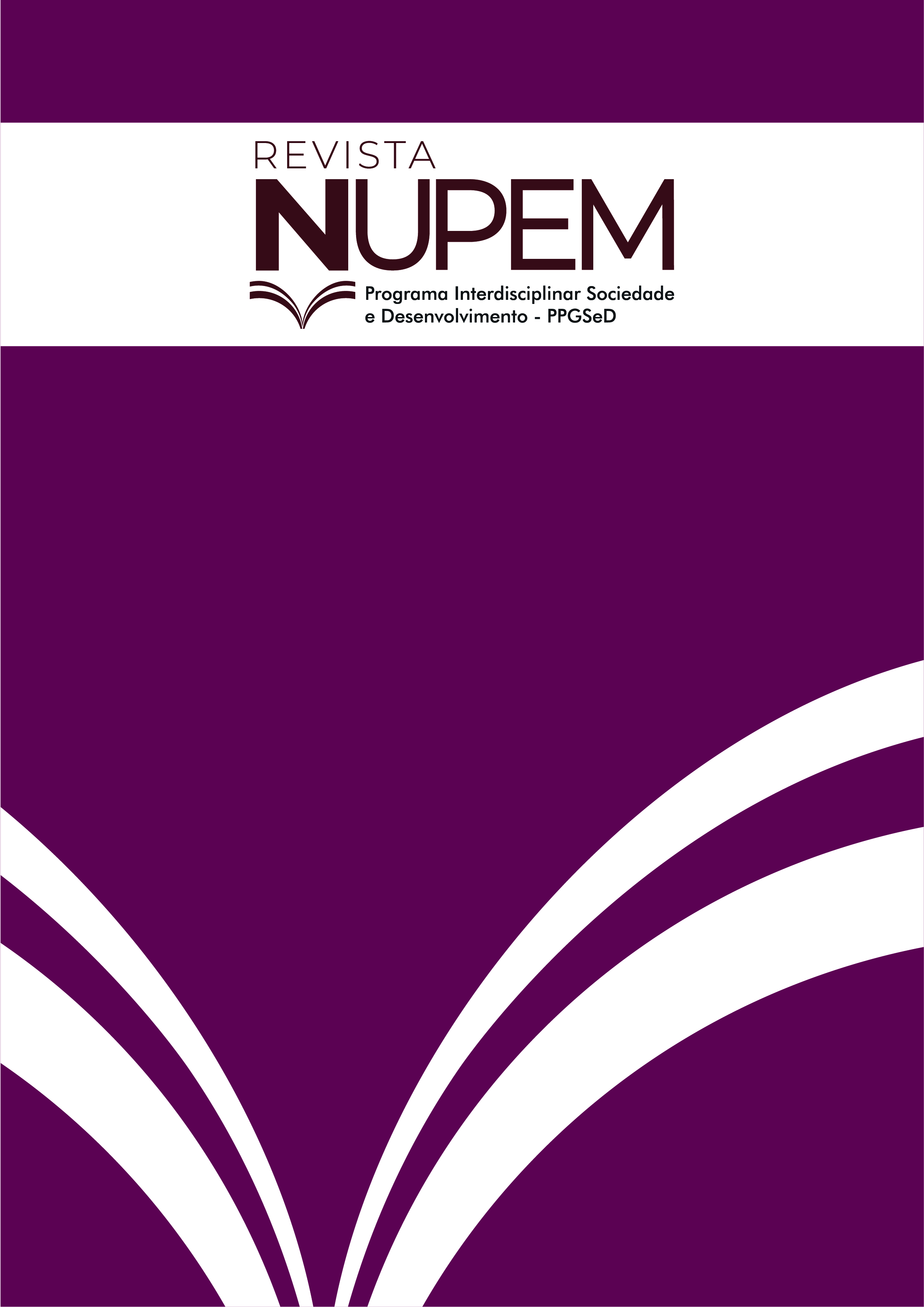Nuevas masculinidades. Experiencias del municipio Urbano Noris Cruz. Holguín/Cuba
DOI:
https://doi.org/10.33871/nupem.2022.14.31.280-290Palavras-chave:
Nuevas masculinidades, Equidad de género, Modelos masculinos, Desarrollo localResumo
El artículo expone la contribución de nuevas masculinidades contra modelos de masculinidad hegemónico en el municipio Urbano Noris. La investigación se realizó a través del estudio de casos, se muestra el aporte de la cátedra de género en la formación de actores locales que ha contribuido a revelar otras miradas de analizar las masculinidades. La triangulación es el proceder metodológico utilizado, se triangulan métodos como la entrevista y la observación participante para conocer la problematización sobre el día del hombre y de información, correlación, contrastación e integración para evaluar los resultados obtenidos, entre los que destacan la implicación de un número importante de decisores claves del territorio en la iniciativa y el reconocimiento de hombres que favorecen nuevas masculinidades con repercusión favorable en la familia, comunidad y en las políticas, las estrategias y las intervenciones de desarrollo.
Downloads
Referências
ÁLVAREZ, Carmen; SAN FABIÁN, José. La elección del estudio de caso en investigación educativa. Gaceta de Antropología, v. 28, n. 1, p. 2-12, 2012.
BADINTER, Elizabeth; KUPER Adam. XY: on masculine identity. Nova York: University Press, 2006.
BLY, Robert. Ser hombre. Barcelona: Kairós, 1993.
BRICEÑO, Gustavo; CHACON, Edgar. El género también es asunto de hombres: reflexiones sobre la masculinidad patriarcal y la construcción de una masculinidad con equidad de género. San José: Unión Mundial para la Naturaleza, 2001.
BOSCÁN LEAL, Antonio. Las nuevas masculinidades positivas. Utopía y Praxis Latinoamericana, v, 13, n. 41, p. 93-106, 2012.
BOISIER, Sergio. América Latina en un medio siglo (1950-2000): el desarrollo, ¿Donde estuvo? Observatorio Iberoamericano del Desarrollo Local y la Economía Social, n. 1, p. 3-41, jul./sep. 2007.
CARABÍ, Àngels; ARMENGOL, Josep. La Masculinidad a debate. Barcelona: Icaria, 2008.
CISNEROS PÉREZ, Rubén. Ni feos, ni fuertes, ni formales o la ruptura de la masculinidad patriarcal sagrada. Monterrey: ITESM Monterrey, 2001.
ECURED. Urbano Noris (Holguín). EcuRed Enciclopedia Cubana. 2018 Disponible en: https://bit.ly/3EV3uvQ. Acceso en: 10 dec. 2021.
FIDÓ, Pedro. Memórias del II evento las nuevas masculinidades. Urbano Noris: Centro Universitario Municipal Urbano Noris, 2016.
GILMORE, David. Hacerse hombre: concepciones culturales de la masculinidad. Barcelona: Paidós, 1994.
GIL CALVO, Enrique. Máscaras masculinas: héroes, patriarcas y monstruos. Barcelona: Editorial Anagrama, 2006.
GONZÁLEZ PAGÉS, Julio. Macho, varón, masculino: estudio de masculinidades en Cuba. La Habana: Ed. de la Mujer, 2010.
KAUFMAN, Michael. Beyond patriarchy: essays by men on pleasure, power, and change. New York: Oxford University Press, 1987.
KEIJZER, Benno de. El varón como factor de riesgo: masculinidad, salud mental y salud reproductiva. In: TUÑON, Esperanza (Coord.). Género y salud en el Sureste de México. Villahermosa: ECOSUR; UJAD, 1997, p. 1-15.
MOORE, Robert; GILLETTE, Douglas. La nueva masculinidad: rey, guerrero, mago y amante. Barcelona: Ediciones Paidós, 1993.
OLAVARRÍA, José; PARRINI, Rodrigo (Eds.). Masculinidad/es, identidad, sexualidad y familia: Primer Encuentro de Estudios de Masculinidad. Santiago: FLACSO-Chile; Universidad Academia de Humanismo Cristiano; Red de Masculinidad, 2000.
RAMÍREZ, Juan Carlos. Violencia y masculinidad: reconstrucción de un proceso. In: RAMÍREZ, Juan Carlos. Madejas entreveradas: violencia, masculinidad y poder. Madrid: Plaza y Valdés, 2010, p. 203-370.
SANTOS, Arnoldo; GALLARDO, Olga. Desarrollo humano a escala local: experiencias en el municipio Urbano Noris, Holguín/Cuba. Revista NUPEM, v. 9, n. 16, p. 26-37, jan./abr. 2017.
THOMPSON, Keith. To be a man in search of the deep masculine. Los Angeles: J. P. Tarcher, 1991.
UGARTE, Álvaro. Desarrollo de capacidades locales para la gestión: un método, una filosofía. Madrid: La Suma de Todos, 2011.
Downloads
Publicado
Edição
Seção
Licença
Copyright (c) 2021 Arnoldo Higinio Santos Assán, Félix Díaz Pompa, Juan Raciel Suárez Suárez , Nury de los Ángeles Valcárcel Leyva

Este trabalho está licenciado sob uma licença Creative Commons Attribution 4.0 International License.



